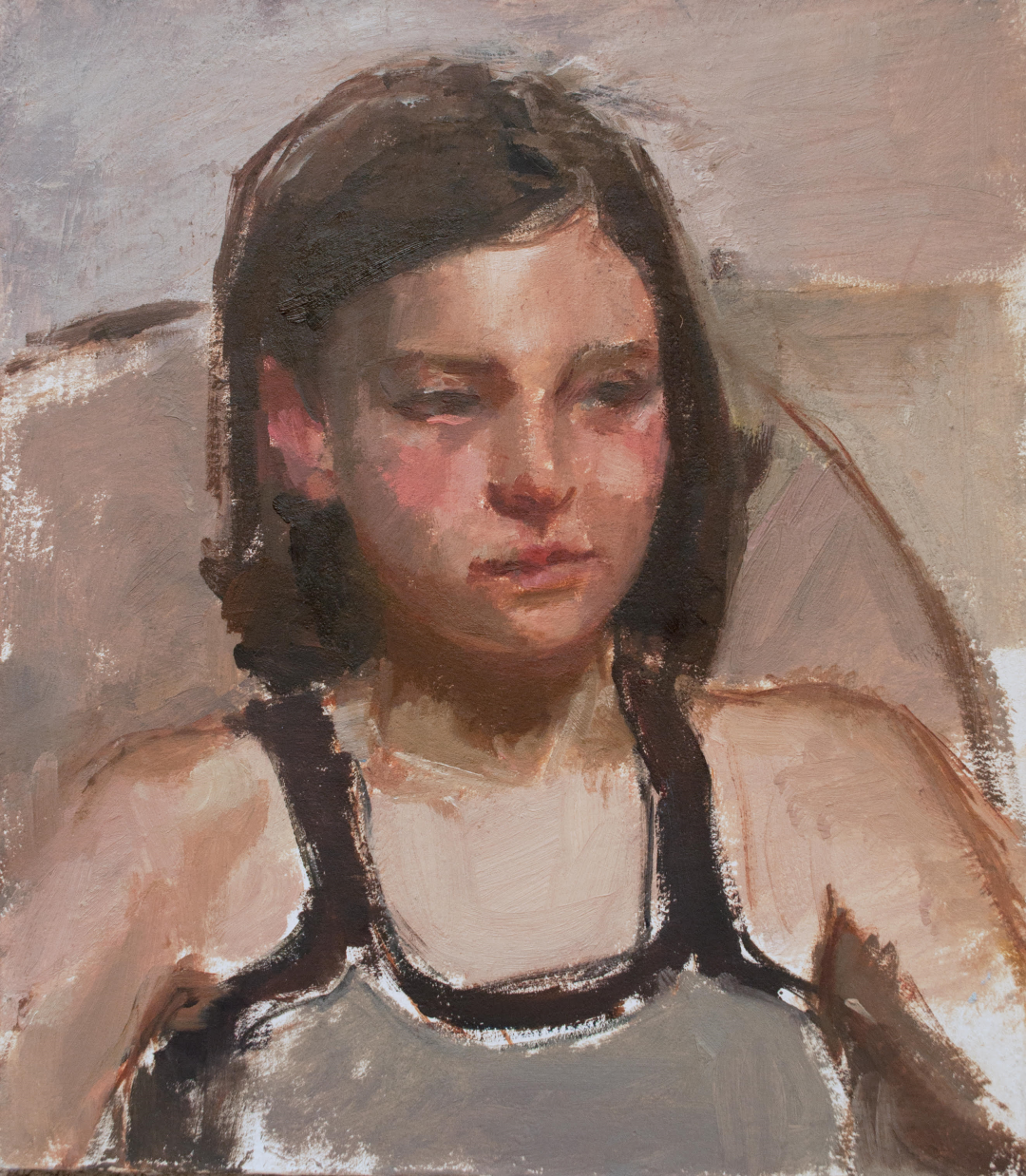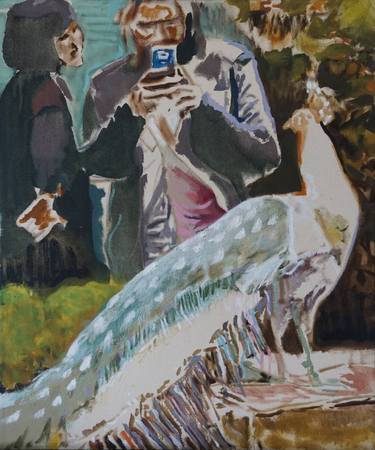Understanding the Art of Metaphorical Oil Paint: Vital Tips and Techniques for Aspiring Artists
Figurative oil paint represents an intricate crossway of strategy and interpretation, demanding a detailed understanding of human anatomy, make-up, and color theory. An expedition of color harmony and texture techniques can substantially enhance the aesthetic influence of their work.

Recognizing Human Makeup
Understanding human anatomy is basic for any artist desiring grasp metaphorical oil paint. A thorough grasp of the human type allows musicians to produce realistic depictions that reverberate with viewers. Knowledge of anatomical structures, such as joints, bones, and muscle mass, offers necessary understanding right into how the body moves and poses.
Musicians need to acquaint themselves with the percentages of the human number, consisting of the connection between different body components and just how these percentages differ across genders and ages. This recognition permits precise scaling and point of view in their work. Additionally, understanding the underlying musculature boosts the capacity to illustrate activity and tension in a figure, causing a much more compelling and dynamic make-up.
Researching composition also aids in determining subtle subtleties in position and expression, which are vital for conveying feeling and story within a painting. Resources such as physiological textbooks, life illustration sessions, and on the internet tutorials can be indispensable tools for artists looking for to deepen their physiological knowledge. Inevitably, grasping human composition not just enhances technological skill yet likewise enhances a musician's innovative vision, enabling them to bring their metaphorical oil paints to life with authenticity and depth.
Importance of Make-up

Secret principles of structure consist of balance, unity, and prime focus. Accomplishing balance makes sure that no solitary aspect bewilders the others, while unity creates a sense of harmony throughout the piece. Centerpieces accentuate considerable elements of the artwork, enabling customers to engage with the story or theme much more deeply.
Furthermore, the usage of leading lines and the policy of thirds can dramatically boost make-up. Leading lines naturally assist the customer's look with the painting, while the rule of thirds offers a framework for placing essential elements in an aesthetically enticing way. By grasping structure, aspiring musicians can boost their metaphorical oil paintings, transforming them into compelling aesthetic tales that resonate with their target market.
Mastering Shade Concept
Shade theory serves as a basic element of figurative oil paint that complements the principles of composition. Recognizing the color wheel, which consists of key, secondary, and tertiary shades, is vital for producing unified schemes and efficient visual stories.
Secret concepts such as color, saturation, and value play an important role in establishing the mood and influence of a painting. Artists must explore cool Find Out More and cozy shades to evoke specific emotions; cozy colors usually share energy and interest, while amazing shades can impart peace and tranquility.
The relationship between complementary shades-- those opposite each other on the shade wheel-- can create striking contrasts and vibrant make-ups. When compared, these colors improve each various other's vibrancy, attracting the visitor's eye and including depth to the artwork.
In addition, comprehending similar shades permits artists to accomplish a feeling of unity and coherence. By selecting colors that are surrounding on the wheel, one can preserve a well balanced atmosphere throughout the piece.
Eventually, understanding shade theory outfits aspiring artists with the tools essential to adjust color deliberately, boosting their capacity to communicate feeling and story via metaphorical oil paint. figurative oil painting.
Methods for Appearance
A variety of techniques can successfully produce appearance in metaphorical oil painting, adding depth and dimension to the artwork. One essential technique is using impasto, where thick layers of paint are applied to the canvas, enabling for a three-dimensional high quality. This method improves light communication, producing vibrant aesthetic passion.
One more approach is scumbling, which includes applying a thin layer of lighter paint over a dried darker layer. This method permits the underlying color to show with, causing a soft, distinctive result that can stimulate a sense of atmosphere or age. Dry brushing is also important; using a dry brush with marginal paint, artists can create delicate appearances and fine lines, excellent for recording the nuances of skin or material.
Additionally, palette blades can be utilized to use or scrape paint, generating one-of-a-kind patterns and structures. Trying out various tools and materials, such as sponges or dustcloths, can additionally enrich the textural top quality of a paint. Inevitably, grasping these techniques calls for method and testing, allowing musicians to uncover the diverse responsive high qualities that can elevate their metaphorical works.
Creating Your One-of-a-kind Style
An artist's distinct style is often the conclusion of personal experiences, affects, and methods honed with time. Establishing this originality in figurative oil paint calls for a mindful initiative to check out both your internal self and the broader imaginative landscape. Begin by reflecting on the motifs and subjects that reverberate with you emotionally; your interest will infuse credibility right into your job.
Research study numerous styles and movements, but rather than copying, extract aspects that speak with you - figurative oil painting. Experiment with various methods, color combinations, and make-ups, allowing yourself the freedom to play without the pressure of excellence. Keep a sketchbook or journal to document your go right here thoughts, ideas, and creative development; this will certainly function as a valuable resource for identifying repeating themes and choices
Look for constructive feedback from peers or mentors, as they can provide insights that brighten aspects of your work you might overlook. Attend workshops and exhibitions, try this site submersing on your own in the art area to more improve your viewpoint. Be client with on your own; the trip of establishing an one-of-a-kind design is continuous, developing with every canvas and each brushstroke you encounter. Accept the process as high as the outcome, and your unique voice will emerge.

Conclusion
Understanding metaphorical oil paint demands a comprehensive grasp of human anatomy, composition, and shade theory. Embracing these foundational principles will significantly benefit aiming artists on their creative journey.
Metaphorical oil paint stands for an intricate junction of method and interpretation, demanding a complete understanding of human composition, structure, and color concept. An expedition of shade consistency and structure methods can considerably enhance the visual influence of their job. By grasping structure, aspiring musicians can boost their figurative oil paintings, changing them right into compelling aesthetic tales that reverberate with their target market.
Experiment with various techniques, shade schemes, and make-ups, permitting yourself the freedom to play without the stress of perfection.Mastering metaphorical oil painting demands a thorough grasp of human anatomy, structure, and color theory.